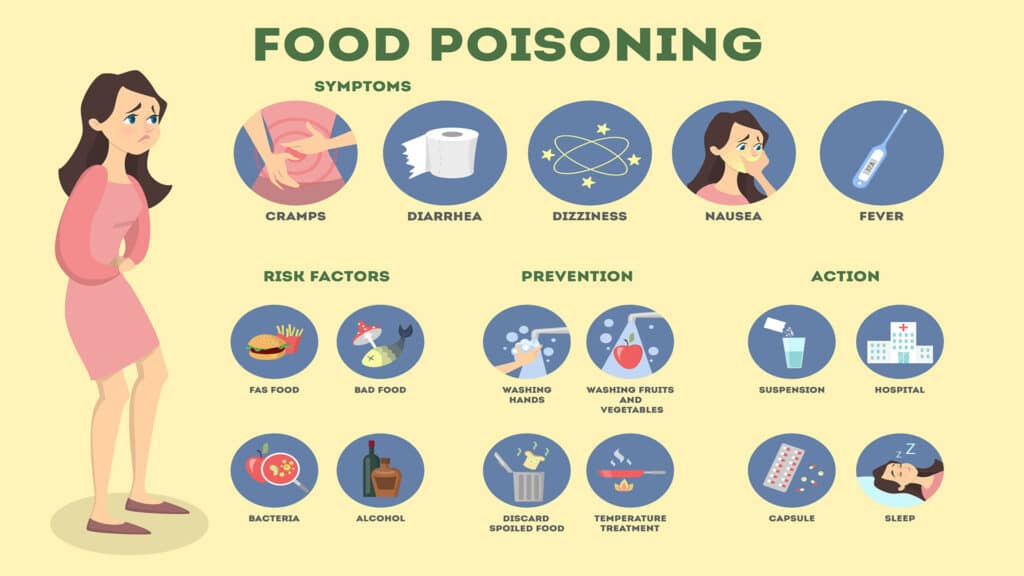Yibai Insights
Explore the latest trends, news, and insights from around the world.
Avoiding Dinner with the Devil: Outwitting Food Poisoning
Dodge disaster and outsmart food poisoning with tips to keep your meals heavenly! Discover how to eat safe and stay healthy.
Top 10 Tips for Preventing Food Poisoning at Home
Food poisoning can be a serious issue, but with some simple precautions, you can significantly reduce the risk in your home. Here are 10 tips to help you prevent foodborne illnesses:
- Wash Your Hands - Always wash your hands with soap and water for at least 20 seconds before and after handling food.
- Keep Your Kitchen Clean - Regularly clean and disinfect countertops, cutting boards, and utensils to eliminate harmful bacteria.
- Separate Raw and Cooked Foods - Use different cutting boards for raw meat and ready-to-eat foods to prevent cross-contamination.
- Cook Foods Thoroughly - Ensure all foods are cooked to the appropriate temperatures to kill pathogens. Use a food thermometer for accuracy.
Additionally, it's essential to be mindful of food storage practices.
- Store Foods Properly - Keep perishable items in the refrigerator and ensure your fridge is set below 40°F (4°C).
- Pay Attention to Expiration Dates - Always check expiration dates on packaged foods and discard any expired items to avoid consuming spoiled food.
- Thaw Food Safely - Never thaw food at room temperature; instead, thaw in the refrigerator, in cold water, or in the microwave.
- Be Cautious with Leftovers - Store leftovers promptly in airtight containers and consume them within three to four days.

Understanding the Signs of Food Poisoning: What to Look For
Food poisoning is a serious condition that can arise after consuming contaminated food or beverages. Understanding the signs of food poisoning is crucial for identifying the symptoms early and seeking appropriate treatment. Common symptoms include nausea, vomiting, abdominal cramps, and diarrhea, which can manifest anywhere from a few hours to several days after ingestion. In some cases, fever and chills may also accompany these symptoms, indicating a more severe illness. If you notice a sudden onset of these effects, especially after eating, it's essential to assess other potential triggers.
In addition to the physical symptoms, there are specific signs that indicate the severity of the situation. If you experience persistent vomiting that lasts longer than 24 hours, high fever (over 101.5°F), signs of dehydration (such as decreased urination, dry mouth, or dizziness), or if you have bloody stools, it is vital to seek medical attention immediately. Understanding the signs of food poisoning will not only help you take action promptly but also assist healthcare professionals in determining the right course of treatment. Stay vigilant and prioritize food safety to reduce the risk of foodborne illnesses.
Is Your Kitchen a Safe Zone? Essential Food Safety Practices
Ensuring that your kitchen is a safe zone is crucial for maintaining food safety and preventing foodborne illnesses. Start by familiarizing yourself with the essential food safety practices that can significantly reduce risks. One of the most important steps is to keep your kitchen clean. This includes regularly sanitizing surfaces, utensils, and cutting boards to eliminate harmful bacteria. Remember to wash your hands thoroughly with soap and water before and after handling food, especially raw meat and poultry.
Another critical aspect of food safety is proper food storage. Always store perishable items in the refrigerator at or below 40°F (4°C) to inhibit bacterial growth. Use an FIFO (First In, First Out) system to ensure older food is consumed before newer items. Moreover, be mindful of understanding cooking temperatures; using a food thermometer can help guarantee that your meals reach a safe internal temperature, killing any pathogens that might be present. By implementing these practices, you can create a safe environment in your kitchen and protect your family from foodborne hazards.